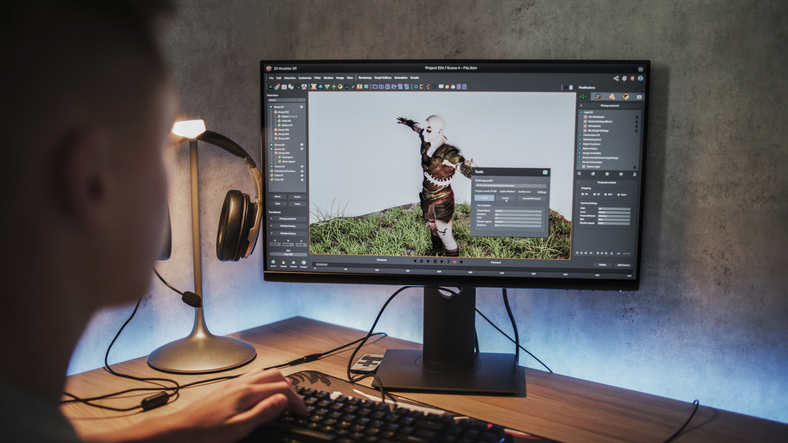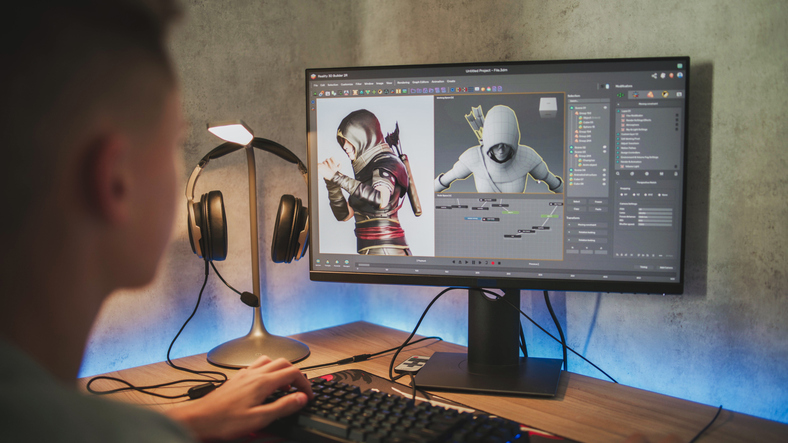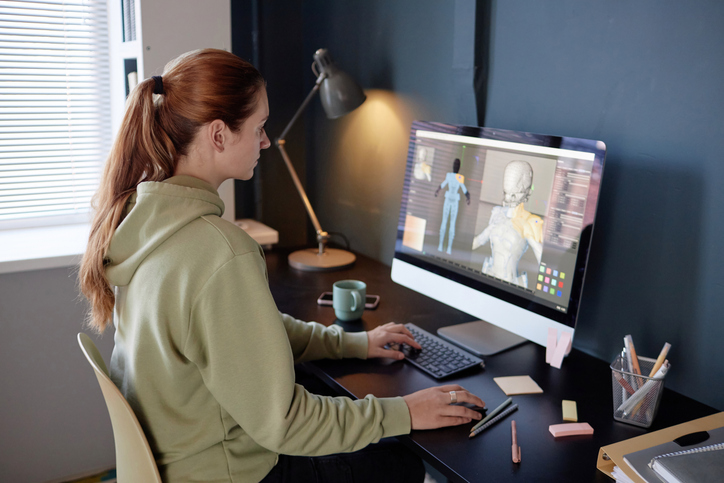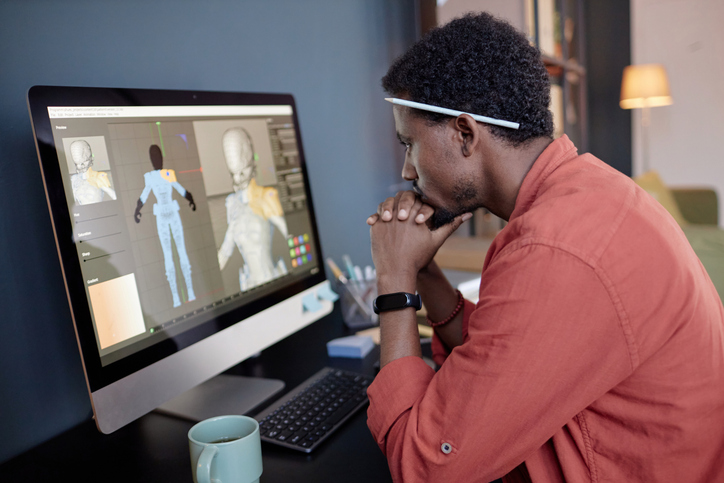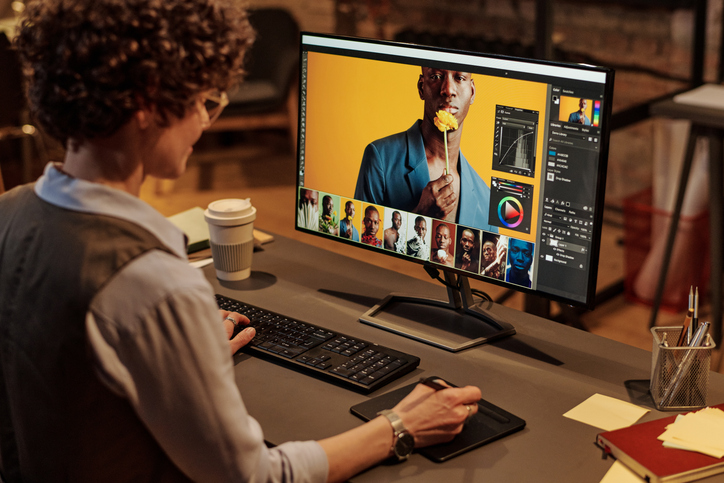If you’ve ever been struck by a bold poster, inspired by a sleek app interface, or bought a product simply because the packaging looked incredible then you’ve already experienced the power of graphic design. From the screens we scroll to the signs we follow; graphic design is everywhere. But what is graphic design, really? And why is it such a vital skill in today’s creative economy?
In this article, we’ll explore what graphic design is, its core principles and elements, the different types you can dive into, and why study Graphic Design especially at a forward-thinking school like VCAD (Visual College of Art and Design) can help launch a meaningful, creative career.
What is Graphic Design?
At its heart, graphic design is the art of visual communication. It's where creativity meets purpose, where fonts, colours, shapes, and imagery come together to tell a story, sell a product, or share an idea.Graphic design isn’t just about making things “look good.” It’s about making things work by guiding users, enhancing understanding, and sparking emotion. Whether it’s a mobile app interface or a business card, design helps bridge the gap between people and information.
Historically, graphic design dates back to early cave paintings and ancient manuscripts. But as a profession, it truly emerged during the Industrial Revolution, evolving alongside print technologies. In today’s digital age, graphic design spans everything from motion graphics to environmental design and continues to shape how we interact with the world around us.
Key Principles of Graphic Design
Behind every stunning visual is a well-planned structure. Graphic designers rely on core design principles to organize and elevate their work:
Contrast: Contrast is all about highlighting the differences between elements to create emphasis and draw the viewer’s attention. It can be achieved through variations in colour, size, shape, typography, texture, or even alignment. High contrast can create energy and focus, while low contrast provides subtle harmony.
Repetition: Repetition involves the consistent use of visual elements such as fonts, colours, icons, lines, or shapes throughout a design. This principle reinforces brand identity and strengthens the cohesiveness of a layout.
Alignment: Alignment is the arrangement of elements along a visual line or grid, ensuring a polished and organized look. It creates a sense of order and connection between objects, even if they are not physically close to one another.
Proximity: Proximity refers to placing related elements close together to indicate they belong to the same group or category. It helps organize information and reduces visual clutter.
Balance: Balance is about distributing elements across a layout to achieve visual stability. This can be done symmetrically (where elements are mirrored evenly on each side) or asymmetrically (where balance is achieved through contrast, scale, or strategic placement).
Space: Also known as negative space, space is the unmarked area between elements in a design. Far from being “empty,” white space plays a critical role in defining structure, creating emphasis, and enhancing legibility.
These principles aren’t just rules, they’re the tools that transform creative ideas into impactful visual experiences.
Bonus Read: Become a Graphic Designer in Canada
Essential Elements of Graphic Design
Think of the elements of design as your creative toolkit. These are the building blocks that every graphic designer works with:
Line: Line is the most basic yet versatile design element. More than just a connection between two points, lines can guide the viewer’s eye, divide space, build emphasis, or create movement across a layout. Depending on how they’re styled whether thick or thin, straight or curved, solid or broken lines can convey emotion and energy. In branding, layout, and web design, lines often create structure and define the visual path.
Shape: Shape is another fundamental component in graphic design. Shapes can be geometric, like circles and squares, or organic, like freeform blobs or natural elements. They add interest, organize information, and can evoke symbolic meaning. For instance, circles often represent unity and wholeness, squares suggest stability and order, while triangles imply direction and motion. Shapes are frequently used to highlight content, form icons, or create patterns that unify a design.
Colour: Colour plays a powerful role in design, impacting mood, perception, and user behaviour. It’s more than decoration it sets tone and creates emotional resonance. Red might evoke excitement or urgency, blue can build trust and calm, yellow brings cheerfulness, and green represents nature and growth. Understanding colour theory how hues interact, contrast, and complement each other allows designers to build compelling compositions that communicate effectively and stand out in crowded visual environments.
Texture: Texture, whether tactile or visual, adds depth and dimension to a design. In print, texture might be physically felt through finishes like embossing or paper grain. In digital design, texture is implied suggested through patterns, gradients, photos, or illustrations that give a sense of surface. Texture helps bring richness to compositions and can define the personality or mood of a piece. For example, rough textures can create a sense of rawness or grittiness, while soft textures can feel warm and inviting.
Typography: Typography is the design of text, and it’s much more than choosing fonts. It’s about how type is arranged, sized, spaced, and styled to enhance readability, establish hierarchy, and convey personality. Typography can make a design feel serious, playful, elegant, or modern depending on the choices made. Serif fonts often suggest tradition and authority, while sans serif fonts tend to feel clean and contemporary. The right typography brings a voice to the words and can turn plain text into a visual message.
At VCAD, students in the Graphic Design Diploma Program gain in-depth, hands-on experience working with these essential elements. Through real world assignments and projects, they learn how to combine them strategically to create bold, effective, and visually captivating work. Understanding these core components isn’t just the beginning of design, it’s the key to mastering it.
Bonus Read: How Long Does It Take to Learn Graphic Design?
Main Types of Graphic Design (with Real World Examples)
Graphic design is a diverse field with multiple specializations. Here are eight major types, each with real world impact:
1. Brand Identity Design
From logos to colour palettes, brand designers create the visual language that represents a company’s personality. Think of Nike’s swoosh, it’s more than a logo; it’s a cultural icon.
2. Marketing and Advertising Design
Designers in this field craft everything from social media graphics and web banners to posters and billboards. Their goal? To persuade and inform quickly and creatively.
3. Web and UI Design
UI (User Interface) designers build intuitive, visually appealing interfaces for websites and apps. It’s about creating digital spaces that are easy (and enjoyable) to navigate.
4. Print and Publication Design
This includes books, magazines, catalogues, and brochures. Publication designers play with layout, typography, and imagery to enhance storytelling.
5. Packaging Design
Ever chosen a product just because the packaging caught your eye? Packaging designers create shelf appeal, often combining function with powerful brand messaging.
6. Motion Graphics Design
From animated social posts to title sequences in films, motion designers bring visuals to life with movement, sound, and storytelling.
7. Illustration Design
Some designers specialize in hand drawn or digital artwork for books, websites, packaging, and more offering a personalized, artistic touch.
8. Environmental/Experiential Design
This merges architecture and graphics to create immersive spaces like museum exhibitions, office murals, and wayfinding signage.
Why Graphic Design is Important
In a world dominated by visuals, graphic design is more than decoration, it’s a communication powerhouse.
Here’s why it matters:
- It builds trust and credibility through consistent, professional branding.
- It simplifies information, making complex ideas easy to understand.
- It captures attention in an age of scrolling and swiping.
- It influences decision making, from purchase behaviour to navigation.
Whether you’re a business, nonprofit, or content creator, design is what connects you to your audience.
The Graphic Design Process
Designers don’t just dive in, they follow a structured creative process that ensures clarity, collaboration, and results.
- Briefing: Understand the client's goals, audience, and brand.
- Research: Explore competitors, industry trends, and visual styles.
- Ideation: Sketch, brainstorm, and build mood boards.
- Design & Refine: Create mockups and revise based on feedback.
- Final Production: Deliver polished, print or web ready files.
This process is taught and practiced extensively in VCAD’s Graphic Design Diploma, where students gain hands on experience in working with real world briefs and client style projects.
Tools and Skills, Every Graphic Designer Needs
Being a designer means mastering both creative thinking and technical tools. Here’s what today’s designers use:
Software Skills
Soft Skills
- Creativity and storytelling
- Communication and collaboration
- Time management and adaptability
Design Knowledge
- Colour theory, typography, grid systems
- Layout design and visual hierarchy
- User interface principles
At VCAD, students learn all the above using industry standard software and real-world projects. It’s not just about theory it’s about building a professional level portfolio.
Bonus Read: AI in Graphic Design: The Future of Graphic Designers
Careers in Graphic Design
Graphic design opens doors to a wide variety of creative careers. Some of the most in demand roles include:
- Brand Identity Designer
- UI/UX Designer
- Digital Illustrator
- Marketing Designer
- Publication Designer
- Packaging Designer
- Motion Graphic Artist
- Freelance Creative
Whether you want to work for a top agency, in house brand, or run your own freelance business, graphic design gives you the flexibility to shape your own creative path.
Why Study Graphic Design at VCAD?
If you’re serious about pursuing a career in design, there’s no better place to start than VCAD’s Graphic Design Diploma Program. Here’s what makes VCAD different:
Industry Relevant Curriculum
You’ll gain the technical skills and creative knowledge needed to succeed taught by instructors with real world experience.
Hands On Learning
From branding projects to digital layouts, you’ll build a professional graphic design portfolio that stands out to employers and clients alike.
Career Focused Training
With job search support, resume development, and connections to creative employers, VCAD helps launch your career from day one.
Flexible and Supportive Environment
Whether you're just starting or switching careers, VCAD offers personalized support, small class sizes, and a collaborative learning culture.
Location & Reputation
With campuses across Canada and a reputation for creative excellence, VCAD is a recognized name in the design education space.
VCAD’s Graphic Design Diploma is the perfect launchpad if you're ready to turn your passion for design into a thriving, creative career.
Final Thoughts
So, what is graphic design? It’s the language of visual expression, the backbone of communication in the digital age, and a pathway to a career filled with creativity and purpose. Whether you're drawn to bold branding, seamless web experiences, or captivating visuals, graphic design is your gateway to making an impact. If you're ready to learn the craft, build your portfolio, and start your creative career, VCAD is here to help you get there.
Ready to design your future?
Explore the Graphic Design Diploma Program at VCAD today and take the first step toward a rewarding career in visual communication.
